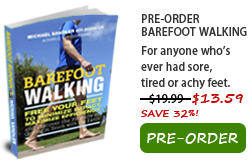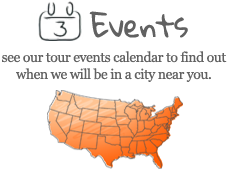Runner Scott McLean has had sore feet lately from doing something unusual -- wearing shoes.
"When I'm running barefoot, my feet tend to stay warmer, but walking to class, I wear shoes," said McLean, a University of Colorado senior.
For some runners who prefer to go barefoot, even snow, ice and cold aren't enough to make them slip into shoes.
"I love it," said Michael Sandler. "We went out to Mount Sanitas a day or two ago on snow and ice and mud, and it was a hoot."
Sandler co-founded Boulder's 200-plus member Barefoot Running Club with his fiancée, Jessica Lee. The two have written a book, "Barefoot Running," which will be published this spring.
"You can feel the sensation of cold, but you adapt," Sandler said. "When you adapt, there's no pain associated with the cold. Because your body has adapted, 20 or 30 degrees, snow and ice, unless it gets really cold, doesn't feel any worse than a cold tile floor."
This is Sandler's third winter running barefoot, and "three years in, this is still a running experiment," he said as he warmed up on a treadmill before heading outside, into the snow.
In any season, running barefoot is a very gradual transition, Sandler said: "It's something you get into 100 or 200 yards at a time."
Whether going completely barefoot or wearing Vibram FiveFinger shoes (minimalist running shoes with separate toes), Sandler says runners must always consider the terrain, temperature, humidity and other factors to determine whether it's safe. He said he knows a runner who went too far the first time and got frostbite.
He also advises barefoot runners to carry shoes and follow the two-question rule: "The second time you think, 'I'm cold, should I head home?,' throw on the shoes and head home -- don't even think about it."
McLean said when he first tried running in snow, he cut back to adjust. He's running through this winter either barefoot or in FiveFingers, depending on conditions.
"My feet get cold, but it's not uncomfortable," McLean said. "You still feel the cold, it just stops mattering so much. The rest of the day, your feet feel hot."
Invisible shoes
Barefoot runners say they warm up inside, on a treadmill or run stairs, then go outside for short periods of time, never going far that they can't loop back to re-warm. They run on warm, sun-drenched pavement or run wearing FiveFingers, neoprene socks or Steven Sashen's new Invisible Shoes.
Sashen started running barefoot in September, so it wasn't long before he had to deal with cold. He thought huaraches -- sandals the Tarahumara Indians sometimes run in, made famous recently by "Born to Run," Christopher McDougall's book about the Tarahumaras and barefoot running -- could be helpful and found some online, but the choices seemed complicated and expensive.
"I thought, there's got to be a way to do it on your own, hopefully less expensively," Sashen said. "I found some materials, made some for myself, my wife, a few pals from the running gang."
Sashen has since sold hundreds of Invisible Shoes -- a thin, 4mm Vibram sole with a simple cord to keep it on your foot -- to runners around the world. He offers two options: do-it-yourself kits -- cut the rubber and tie the knots yourself -- for either $19.95 or $24.95; or custom sandals for $49.95.
Be careful
Dr. Tom Shonka, practicing in Boulder for 25 years and the attending podiatrist at the Boulder Center for Sports Medicine, said if you're going to try running barefoot, go slowly and be very careful with the cold.
"The adaptation is more the foot adapting to the mechanical loads, which are incurred by not having the structured cushioning of the shoe," he said. "It's more your musculoskeletal system might adapt to the differing stresses" than your vascular system adapting.
Since the circulation in your feet is significantly altered by cold, he said, it would be risky for people with circulation issues to even try it.
"If there's any existing compromise of the neurovascular system, it's not going to adapt," he said.
But for people who are healthy and fit, and have good mechanics, sensation and circulation in their feet, Shonka said, "Under those circumstances, my attitude would be, I don't know why you'd want to, but go ahead and try it" in small doses in a controlled way.
Read more: Boldly barefoot: Boulder runners hit the snow sans shoes - Boulder Daily Camera http://www.dailycamera.com/news/ci_14458238#ixzz0gUSF19cR




